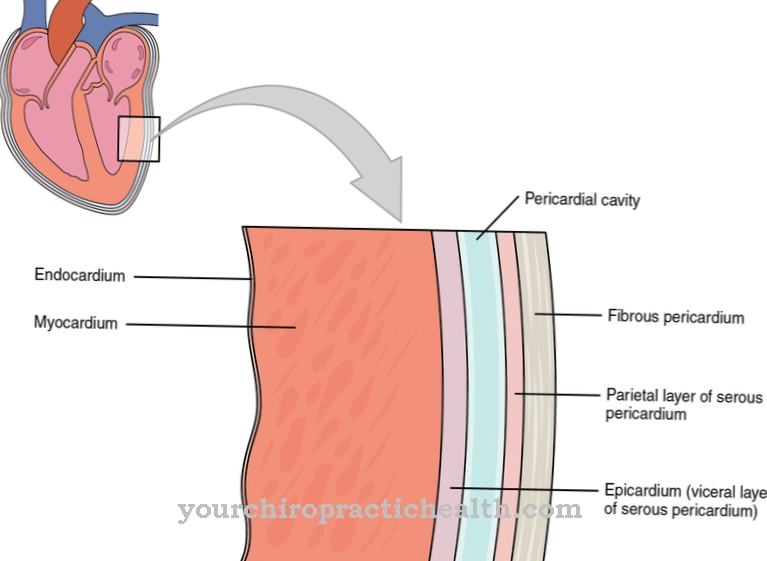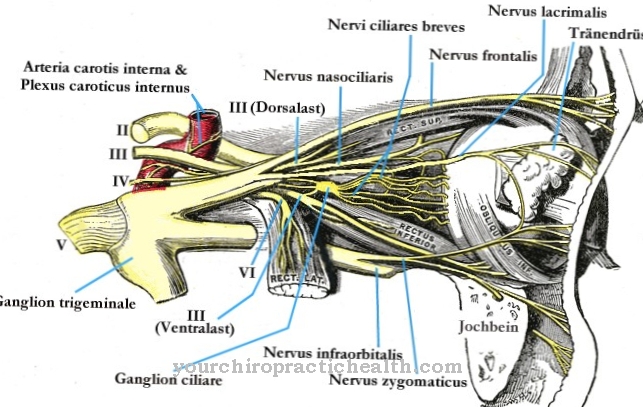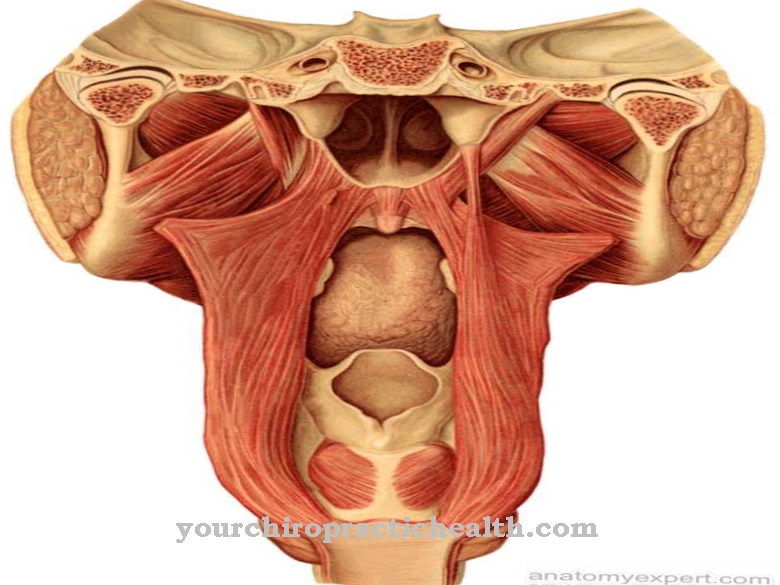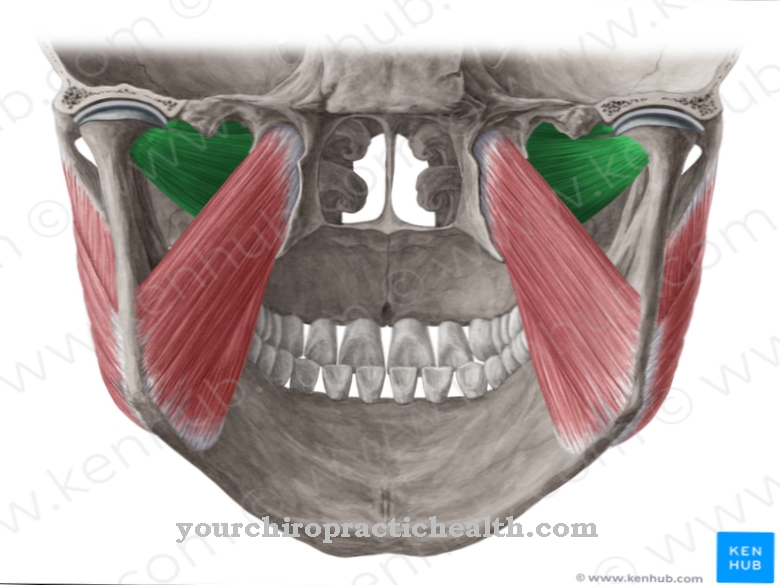Troponin is a complex of three globular protein subunits. As part of the contractile apparatus of the muscle, troponin regulates muscle contraction. It is of particular importance in the diagnosis of heart attacks.
What is troponin?
As a component of the actin filament, troponin is part of the contractile unit of the skeletal and heart muscles. It is a complex of globular proteins which together with F-actin and tropomyosin form the actin filament.
The actin filament, in interaction with the myosin filaments, enables the muscle to contract. Because of its ability to start or stop muscle contraction, troponin is known as a muscle regulator protein in addition to tropomyosin. The protein complex troponin consists of three subunits, the inhibitory troponin I, the troponin T, which is responsible for tropomyosin binding, and the calcium-binding troponin C.
Cardiac troponin plays an important role in the emergency diagnosis of heart attacks. If the cardiac muscles are damaged, the troponin I subunit is released and can be detected in the blood by laboratory diagnostics. This results in a classic progression that allows it to be differentiated from other muscular disorders.
Anatomy & structure
Troponin is part of the actin filaments which, through their interaction with the myosin filaments, enable the muscle to contract. Both filaments form the smallest contractile unit of the muscle, the sarcomere. Troponin is a complex of globular proteins that consists of three subunits.
A distinction is made between inhibitory troponin (TnI), tropomyosin-binding troponin (TnT) and calcium-binding troponin (TnC). Three troponin peptides regularly follow seven F-actin molecules in the filament. As a complex, they lie almost horizontally in the actin filament. Troponin T binds tropomyosin on one side, which is bound to F-actin and on the other to troponin I.Troponin I has a strong affinity for F-actin, so that it is bound to it in the non-contracted state. Troponin C also binds to troponin I and is exposed to the outside.
Troponin C is the smallest of the subunits and has a calcium-binding domain. Depending on the muscles, there are three isoforms of troponin I and troponin T. The cardiac troponin (cTn) is found in the heart muscles and two different troponins (sTn) exist in the skeletal muscles for the fast and slow skeletal muscle fibers.
Function & tasks
As part of the contractile apparatus, troponin plays an important role in regulating muscle contraction. In the non-excited state, the position of the tropomyosin threads prevents the actin filament from binding to the myosin head. Only when the tropomyosin is drawn further into the interior of the filament helix by troponin T is the binding site for myosin exposed. This change in position is achieved by a change in conformation in the troponin complex as a result of an increase in the calcium concentration. Calcium is released into the muscle fibers through electrical excitation of the plasma membrane.
Troponin C is the calcium receptor in the actin filament, as it has a calcium-binding domain. This in turn consists of two structures, each with four calcium binding sites. Two of these binding sites are each highly affinity for calcium, two have a low affinity. Only the low-affinity binding sites are involved in the contraction. The conformational change from troponin C to calcium binding is transmitted directly by troponin T to the tropomyosin, which is drawn further into the groove between the actin strands and releases the binding position for the myosin head.
At the same time, the inhibitory effect of troponin I on the ATPase is canceled and ATP can be split at the myosin, so that the myosin head kinks. The actin filament is pulled along the myosin filament and the muscle contracts. The binding of myosin and actin is interrupted by the addition of new ATP to the myosin. The calcium level in the muscle fiber drops and the tropomyosin threads hide the myosin binding site again. The muscle is in relaxation.
Diseases
The troponin value is the most important laboratory diagnostic parameter for myocardial infarction. If the heart muscle is damaged, the cardiac troponin, especially troponin T and troponin I, is released into the blood. The troponin level can be determined in serum, plasma or whole blood.
The concentration of troponin in the blood shows a typical course after a heart attack, so that it can be differentiated from other heart muscle damage. An increase in troponin occurs about 3-8 hours after the onset of the heart attack. The highest values can be measured 12-96 hours after the start. It takes about two weeks for the troponin level in the blood to return to normal after a heart attack. If the troponin level is falling, it is very likely that it is not a heart attack but another cause such as overstretching, inflammation of the skeletal muscles or other injuries.
Elevated troponin levels are also found in a variety of other diseases that involve the destruction of muscle tissue. For example, the troponin level rises in the event of functional disorders or inflammation of the heart, diseases of the blood vessels, inflammation or injuries to the skeletal muscles, strokes, functional disorders of the lungs or even burns and sepsis. The rise in troponin for the mortality rate after operations is considered a major risk factor. Since there are several days between an increase in troponin and the death of the patient, medication can be intervened in good time.
The rise in the troponin level after heavy physical exertion such as endurance sport has no disease value. Usually the values normalize within a few hours, so that the normal value is back after a maximum of 72 hours.













.jpg)

.jpg)
.jpg)











.jpg)